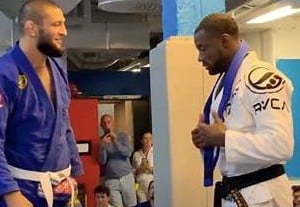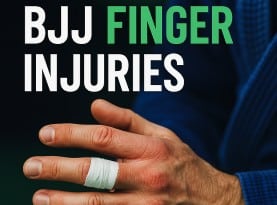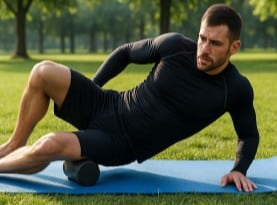Knee Injuries in Brazilian Jiu-Jitsu: Causes, Treatment, and Prevention
Brazilian Jiu-Jitsu (BJJ) places unique stresses on the knee joint through dynamic guard work, takedowns, and submissions. Knee injuries account for a large proportion of all BJJ injuries and can require weeks to months of recovery. This guide explains the most common knee injuries in BJJ, how they occur, signs to watch for, evidence-based treatment and rehabilitation timelines, and practical prevention strategies.
Common Types of Knee Injuries in BJJ
ACL Sprains and Tears
The anterior cruciate ligament (ACL) stabilizes your knee against forward translation and rotation of the shin. In BJJ, ACL tears often result from a planted foot with a sudden pivot or from resisting a deeply applied heel hook. Many athletes experience a “pop,” followed by rapid swelling and a sensation of instability.
ACL Tear & Injury: Symptoms & Recovery
Collateral Ligament Injuries (MCL and LCL)
The medial collateral ligament (MCL) and lateral collateral ligament (LCL) protect your knee from inward and outward forces. MCL sprains are particularly common in BJJ during guard passing or takedown defense when the knee caves inward. LCL injuries occur less often but can result from varus stress, such as an outside foot entanglement.
MCL Tear
Meniscus Tears
The medial and lateral menisci cushion and stabilize the knee. Twisting the knee while the foot is planted—common during guard retention, sweeps, or transitions—can tear the meniscus. Symptoms include joint-line pain, swelling over 24–48 hours, stiffness, and catching or locking sensations.
Torn Meniscus: Causes, Symptoms, Treatment & Prevention
Patellar Dislocation
A patellar (kneecap) dislocation occurs when the patella shifts out of its groove, usually laterally, during a crash or awkward twist. It causes acute pain, visible deformity, rapid swelling, and an inability to bear weight until relocated.
Dislocated Kneecap (Patella Dislocation)
Overuse and Other Conditions
- Knee Bursitis (“grappler’s knee”) from repeated kneeling or mat impact.
- Patellofemoral Pain Syndrome (runner’s knee)—anterior knee pain aggravated by squatting or kneeling.
PFPS - Iliotibial Band Syndrome—outer-knee pain from repetitive flexion/extension under tension.
Mechanisms of Injury in BJJ
- Guard Inversions: Rapid twists in berimbolo or rubber guard can torque the knee beyond its limit.
- Takedowns and Throws: Planting a foot then rotating can stress ACL/MCL or tear menisci.
- Leg Locks: Slow application and early tapping are essential; heel hooks and knee bars transmit high torque to ligaments.
- Pressure & Entanglements: Knee reaping and stacked passes can strain collateral ligaments or cartilage.
Diagnosis and Treatment
A sports-medicine exam utilizes tests such as the Lachman test (ACL), valgus/varus stress test (MCL/LCL), and McMurray test (meniscus), often confirmed by MRI.
- Conservative care: RICE protocol, NSAIDs, bracing, and progressive physical therapy—over 60 % of BJJ knee injuries heal without surgery.
- Surgical repair: Indicated for complete ACL tears, irreparable meniscus tears, or recurrent dislocations; procedures are usually arthroscopic.
Rehabilitation and Recovery Timelines
- MCL/LCL sprains: Grade 1 in 1–3 weeks; Grade 2 in 4–6 weeks; Grade 3 in 6+ weeks.
- ACL reconstruction: 6–9 months before unrestricted sparring; many return closer to 9–12 months.
- Meniscus surgery: Partial meniscectomy in 4–6 weeks; repair in 3–6 months.
- Patellar dislocation: Non-surgical return in 3–4 months; surgical repair up to 6–12 months.
- Overuse conditions: 2–8 weeks of rest and targeted therapy for bursitis, PFPS, or ITBS.
Prevention Strategies
- Strength & Stability: Squats, deadlifts, lunges, band walks, and single-leg balance drills to support the knee and protect ligaments.
- Mobility & Flexibility: Dynamic warm-ups, hip and ankle mobility, and post-training stretches to maintain joint range.
- Technical Skill: Proper breakfalls, controlled leg-lock application, and early tapping to avoid dangerous torques.
- Protective Gear: Knee sleeves for warmth and compression; kneepads for bursitis; hinged braces during early return to sport.
- Prehab & Recovery: Regular “prehab” circuits and adequate rest, nutrition, and cross-training (e.g., swimming) to avoid overtraining.
Conclusion
With awareness of how knee injuries occur, recognition of warning signs, and prompt diagnosis, most BJJ practitioners can recover fully and return to training. A well-structured rehabilitation program, combined with strength, mobility, and smart training practices, will help protect your knees and keep you rolling year after year.




